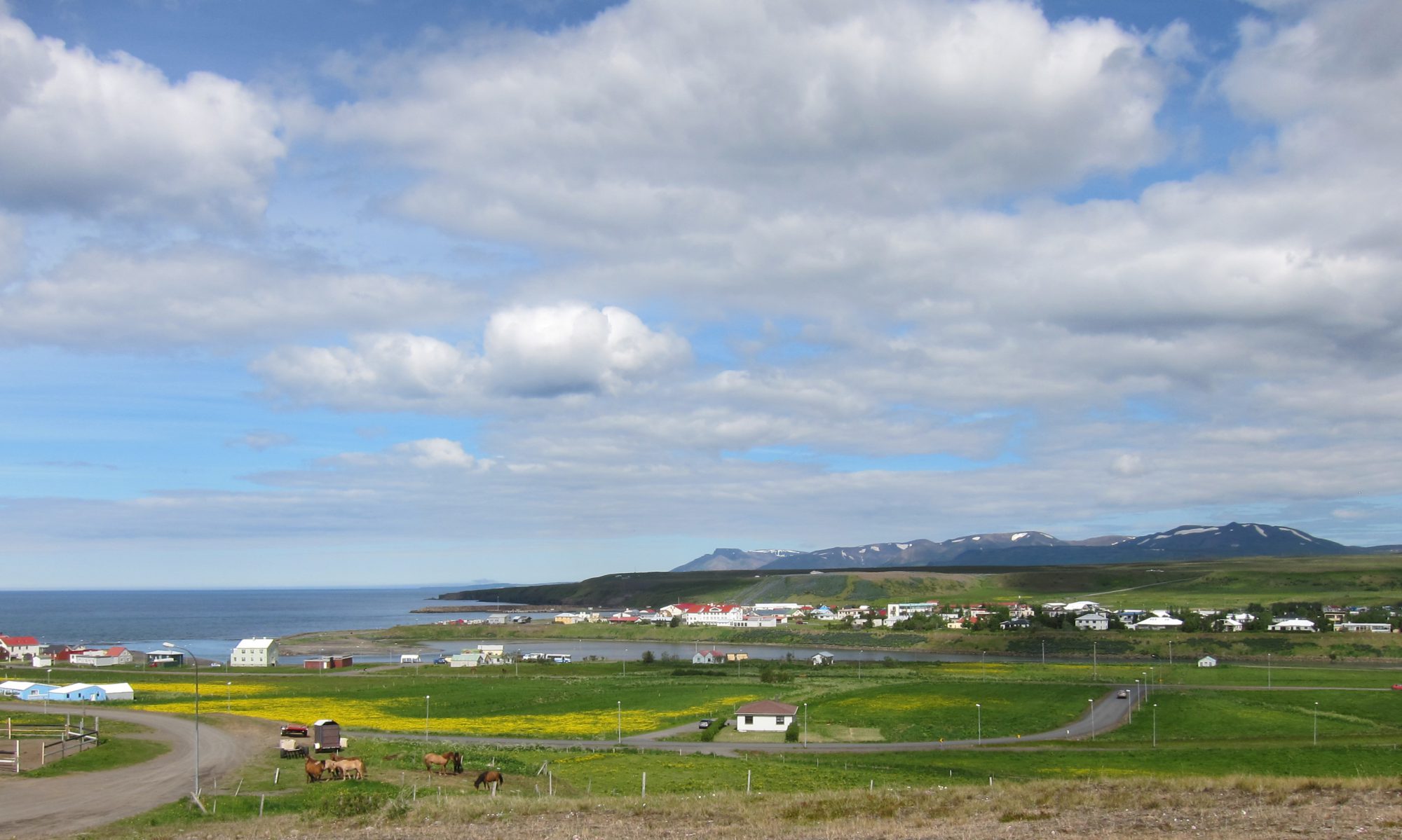Key to our time here is slowing down; experimenting in the studio, taking long walks, recording sounds, reading new books. Slowing down also speaks to how we’re learning, and yesterday was a first example of how as students, so lucky to be doing a field course abroad, we are taking the opportunity to ground our activities in local knowledge, history and experiences. Jóhanna Pálmadóttir, director of the Textílsetur Íslands (Icelandic Textile Center) since 2011 and spinning teacher for 25 years, led us on a day-long spinning workshop. While most in the group were sitting down at a wheel for the first time, making yarn was but one part of our learning.
As our first workshop, it was the chance for students to become familiar with the history and community work of The Icelandic Textile Center. Housed in what was previously the Kvennaskólinn women’s college the centre hosts among other initiatives a residence for international textile artists. Jóhanna recounted stories of artist collaborations, outdoor performances, and (our favourite) a knitting workshop that takes place in the local hot tub during the annual knitting festival. We also learned about the ongoing, collective Vatnsdæla Tapestry project. Based on the local saga of the same name, it tells the family story of the people of Hof. Jóhanna spearheaded the project, which has welcomed the participation of community members, tourists, and Icelanders from across the country — including a man in his late eighties whose mother had attended the Kvennaskólinn in her youth.

Once thrust into the art of spinning, we dug into a pile of Icelandic fleece, modestly beautiful in their natural hues of cream, brown, and almost black. Our fingers quickly took on the distinct scent of lanolin as we touched the fleece and learned about the Þel — the inner wool that keeps the sheep warm (great for felting) and the Tog — the downward facing, water repellent overcoat that keeps the sheep dry and protects them for the wind. Those who hadn’t spun before developed new appreciation for the skill required to make the yarn that produces, among other things, the distinctive Icelandic sweater. Jóhanna told us if we kept at it we’d one day be able to spin without thinking about it. By the end of the day we were still far from that point, but nonetheless improved over hours of laughter and concentration, surmounting the odd frustration and stumbling block.

From the workshop we made our way to Jóhanna’s family sheep farm a few kilometres away. Bought by her grandfather in the 1920s, it sits on 700 hectares with a small lake and not-so-small mountain range as its back drop. Its location off the main road can mean a 20 minute drive into town can take up to 1.5 hours in winter storms, but its unique position relative to sea level also meant it was spared the spring snow that recently fell on its immediate neighbours. The lake is cold but swimmable, and also used by fishermen from away. We toured the barn made by her father in the 1960s, which her son Pálmi Gunnarsson plans fix this summer as he takes over the farm from his parents over the coming years. We learned from his girlfriend Þuríður Hermannsdóttir, who is studying veterinary medicine in Slovakia, that the cost of farmland is now beyond the reach of most young people in Iceland who dream of such a life.

‘It’s like cream’ — this was how Jóhanna described the sight of thousands of mostly white sheep moving together in preparation for the journey back south from the highlands after three months of grazing. On the first Saturday of September they are herded and sorted in a massive pie formation by their respective owners in a day-long community event. Yesterday, only a few weeks from their departure on this annual journey, young lambs frolicked in the pastures, already squeezing through the fence and being called back by the ewes. Nearby, day-old newborns huddled with their mothers in pens in the barn — some drinking milk, others just learning to stand. Another had passed away only hours earlier, its small body taken by Jóhanna to its mother in the hopes should would then take on another lamb whose own mother was rejecting it. With a flock of 400, the whole month of May meant constant back and forth to the barn for Jóhanna and her husband — for the younger generation, it meant spending full nights sleeping there, on 24-hour call in case of complicated births .

Seasonal farming patterns and rural traditions. The life cycle of sheep and the composition of their fleece. Late afternoon light reflecting off of a newly delivered placenta on the barn floor, the ripe smell of hay, and the vast views from a farm passed down through four generations. These are some of the vivid and much appreciated memories that grounded our spinning workshop yesterday. They also complemented the sage advice that when spinning, both hands must be doing something, and the encouraging words that if you struggle, you just may become a better spinner for it.
Thank-you Jóhanna!
